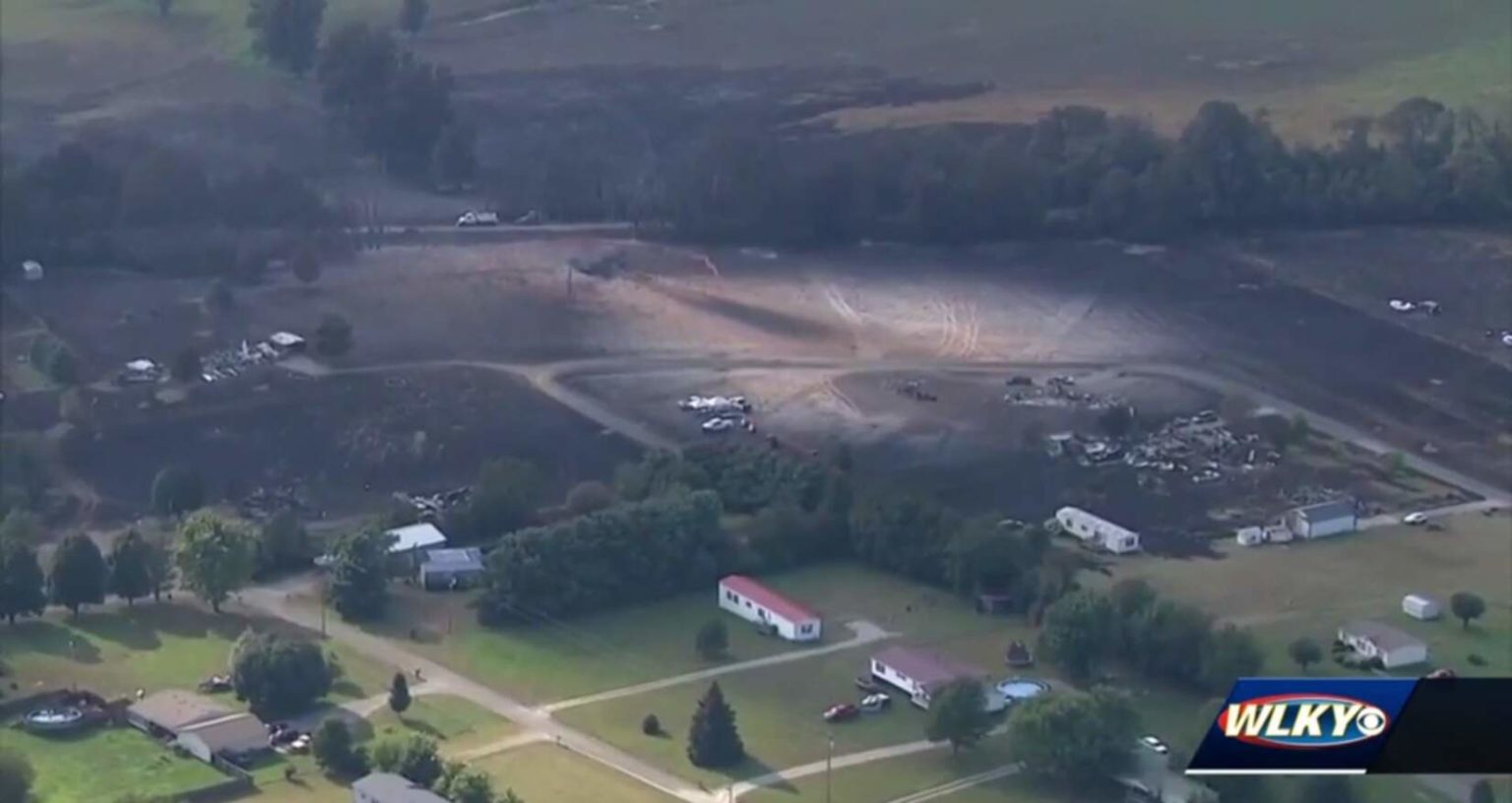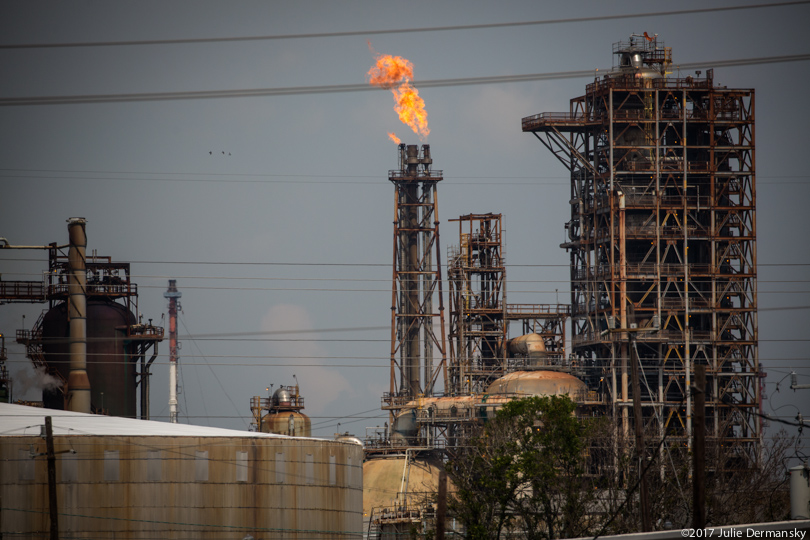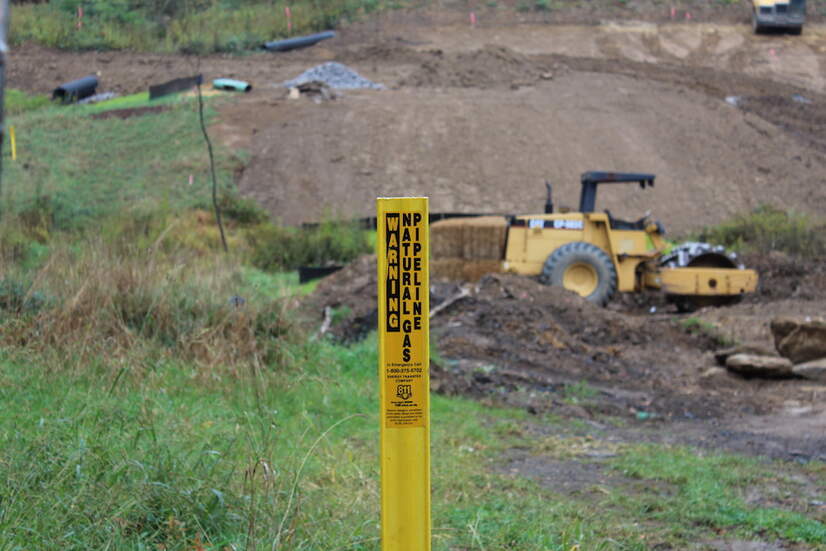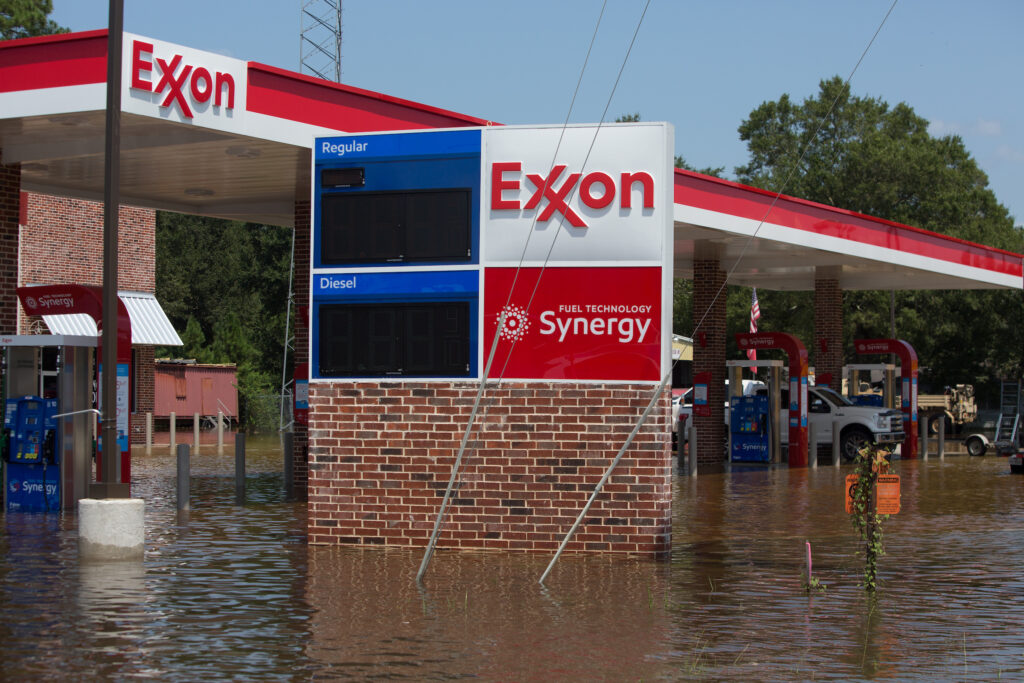On August 1, for the third time in as many years, Enbridge’s Texas Eastern Transmission gas pipeline exploded. This tragic incident in central Kentucky killed a 58-year-old woman, Lisa Denise Derringer, and injured at least five others. Flames towered 300 feet high when the 30-inch diameter pipe ruptured at 1 a.m. and forced at least 75 people to evacuate.
“We opened the backdoor and it was like a tornado of fire going around and around and he said we were trapped,” survivor Jodie Coulter, 53, told CBS News, describing her efforts to flee on foot. Coulter, whose house was within 600 feet of the pipeline, suffered third-degree burns on her arms. “It felt like we were standing next to a blow torch.”
This explosion joins a string of others in the past several weeks involving America’s aging fossil fuel infrastructure — including a network of 2.6 million miles of pipelines, roughly half of which are over 50 years old, and over 130 oil refineries, many of which are 50 to 120 years old.
The Kentucky incident came less than 24 hours after ExxonMobil’s Baytown, Texas, petrochemical plant saw its second major fire this year.
Last week’s Baytown explosion injured 66 workers and has already spurred at least three lawsuits against the company, including one by a worker alleging his burns were far more serious than ExxonMobil had indicated.
Just over a month earlier, a massive fireball and series of explosions ripped through the largest refinery on the East Coast, the Philadelphia Energy Solutions complex.
Flare at ExxonMobil’s Baytown, Texas, refinery following Hurricane Harvey. Credit: Julie Dermansky for DeSmog
Aging Pipelines, Aging Refineries
It may be months before federal investigators reach conclusions about the cause of each accident, but all three incidents took place at sites with a long history of operations — and accidents.
On Monday, Philadelphia Energy Solutions, which first started refining oil back in 1870, long before the invention of gasoline-powered automobiles, began the job of neutralizing and removing over 30,000 barrels of a deadly chemical used in the part of the refinery that exploded. Experts have warned that the undertaking is dangerous, on an unprecedented scale, and unfolding in a densely populated city.
The removal was spurred by a series of massive explosions that shook the city on June 21, including an enormous fireball that lit up the Philadelphia skies around 4:00 a.m.
The Philadelphia Energy Solutions refinery got its start back in 1866 as a kerosene storage site, and grew to become one of the largest refineries on the East Coast. Earlier this year, owners canceled a major planned maintenance project, Reuters reported, prompting calls from Philadelphia mayor Jim Kenney to investigate whether a lack of upkeep played any role in causing the disaster.
Aging oil refineries that use hydrofluoric acid are playing Russian roulette with American population centers. Workers and nearby residents deserve better. @steelworkers https://t.co/N17GneNNqE
— Tim Whitehouse (@TimWhitehouseUS) June 25, 2019
The Baytown, Texas, refinery complex where last week’s fire took place is slated to mark its 100th year of operations next year. In the past century, it has expanded from a plant originally designed to refine 2,500 barrels of oil a day to a sprawling 3,400 acre complex. Today it hosts a 584,000 barrel-a-day refinery plus multiple chemical and plastics plants, including the petrochemical site where the recent fiery blast occurred.
Last week’s fire was sparked at the Baytown Olefins petrochemical plant, which was added to the Baytown complex 40 years ago and is one of the largest of its type in the world.
“Unfortunately, fires like Exxon’s happen too frequently in Houston Ship Channel communities,” said the Texas chapter of advocacy group Break Free From Plastics in an August 5 statement on the blaze. “In fact, Exxon had another large fire just in March of this year big enough for Harris County to sue them over their unauthorized emissions. Soon after, there were major fires at ITC Deer Park and KMCO — both are known repeat violators of environmental laws.”
The gas pipeline behind the Kentucky explosion, the 8,835 mile long Texas Eastern line, was rapidly built in 1943 to carry liquid petroleum from Texas to New York and other East Coast destinations, and was converted to carry natural gas after World War II ended. In January, it had exploded in Ohio, injuring two and destroying two homes. In 2016, the Texas Eastern exploded in Greensburg, Pennsylvania, leaving one man hospitalized for months with severe burns.
The section that exploded on August 1 roughly 70 miles from Louisville, Kentucky, was placed in the ground over 60 years ago.
“With the rate of corrosion on this pipeline, there are many sections of the pipeline that are essentially a ticking time bomb,” attorney Eric Hageman, who represented the man burned in the 2016 Pennsylvania explosion, told Kentucky.com.
Concerns Over Newest and Oldest Pipes as Accident Rates Rise
A natural gas pipeline warning at a Pennsylvania pipeline construction site. Credit: Ashley Braun, DeSmog
When it comes to fossil fuel pipelines, accidents are happening with increasing frequency, experts say.
“Even more concerning than the raw number of failures is that while we have all been saying the goal is zero incidents, the number of significant incidents including all types of pipelines has been increasing over the past decade according to PHMSA [Pipelines and Hazardous Materials Safety Administration] data, with the majority of that increase attributable to hazardous liquid pipelines,” Carl Weimer, executive director of the Pipeline Safety Trust, testified to Congress in April. “Also of concern is that for gas transmission and hazardous liquid pipelines, over 65 percent of the significant failures in the past decade are from causes the operators ought to have control over such as corrosion, incorrect operations, equipment failures, and problems with the materials they use and the welds they make.”
“Over the past several years, spills of crude oil and liquid petroleum products from pipelines have increased, reversing earlier improvements,” an April 2018 report by Greenpeace USA and Waterkeeper Alliance similarly found.
The nation’s oldest pipelines not only are experiencing problems with corrosion but newer pipelines are also outliers when it comes to accidents. Amid a sprint to build out new pipelines and infrastructure to support the fracking rush, the safety record of newly built pipelines deteriorated.
A 2015 report by the Pipeline Safety Trust found that some of the most dangerous onshore hazardous liquids pipelines were those built in the 1920s, with a rate of 8.7 incidents per 10,000 miles — a rate only surpassed by pipes laid in the 2010s, which had over 13.5 reported incidents per 10,000 miles. Gas pipelines built in the 2010s also had a higher per-mile accident rate than those built during any prior decade, including all pipes built prior to the 1940s, the Trust found.
We’ve been devastated to hear the news of explosions at fossil fuel and #petrochemical facilities in #Colorado #Texas #Pennsylvania and #Kentucky in just the past 2 days.
We cannot wait to get off #fossilfuels. We need a #JustTransition now. https://t.co/N8Dm6xGAEu @melissat22 pic.twitter.com/tRj3h0AKMw
— EARTHWORKS (@Earthworks) August 1, 2019
The cumulative reported damage caused by pipeline accidents and explosions has risen sharply over the past twenty years. From 1999 to 2009, pipeline accidents caused just over $3 billion in damages, according to PHMSA data. From 2009 to 2018, pipeline accidents caused $5.3 billion in damages, including over $1 billion in harm in 2018 alone.
The number of reported deaths has fallen since its peak of 38 people in 2000, with seven people reported killed in 2018, PMSHA data shows.
Canadian firm Enbridge, which acquired the Texas Eastern Transmission pipeline in a 2017 merger — averaged one pipeline accident every 20 days between 2002 and 2018, according to a November 2018 report by Greenpeace USA, including the largest onshore oil spill in recent U.S. history, the Kalamazoo, Michigan, disaster that spilled over a million gallons of diluted tar sands oil after a 30 inch pipeline burst.
Last year, Enbridge was fined $1.8 million for failing to timely inspect its Lakehead pipeline system as required by a consent decree the company reached with the Environmental Protection Agency and the Department of Justice following that 2010 Michigan spill.
DeSmog has previously reported on allegations by two whistleblowers that builders had cut corners during construction of a 2016 expansion of the Texas Eastern Transmission system called the Algonquin Incremental Market pipeline, including claims that the company buried pipeline before weld inspection results were available, placing enormous pressure on safety inspectors.
Environmental groups have pointed to the industry’s safety record as another reason to encourage a transition towards less volatile renewable energy.
“These incidents are just the latest in a growing list of injurious and deadly fossil fuel impacts across the United States,” Earthworks’ Melissa Troutman wrote in an August 1 post. “As the renewable energy revolution continues to grow, these events are a tragic reminder of what our society has yet to leave behind.”
Main image: The site of the Kentucky gas pipeline explosion. Credit: Screenshot from WLKY videoSubscribe to our newsletter
Stay up to date with DeSmog news and alerts









